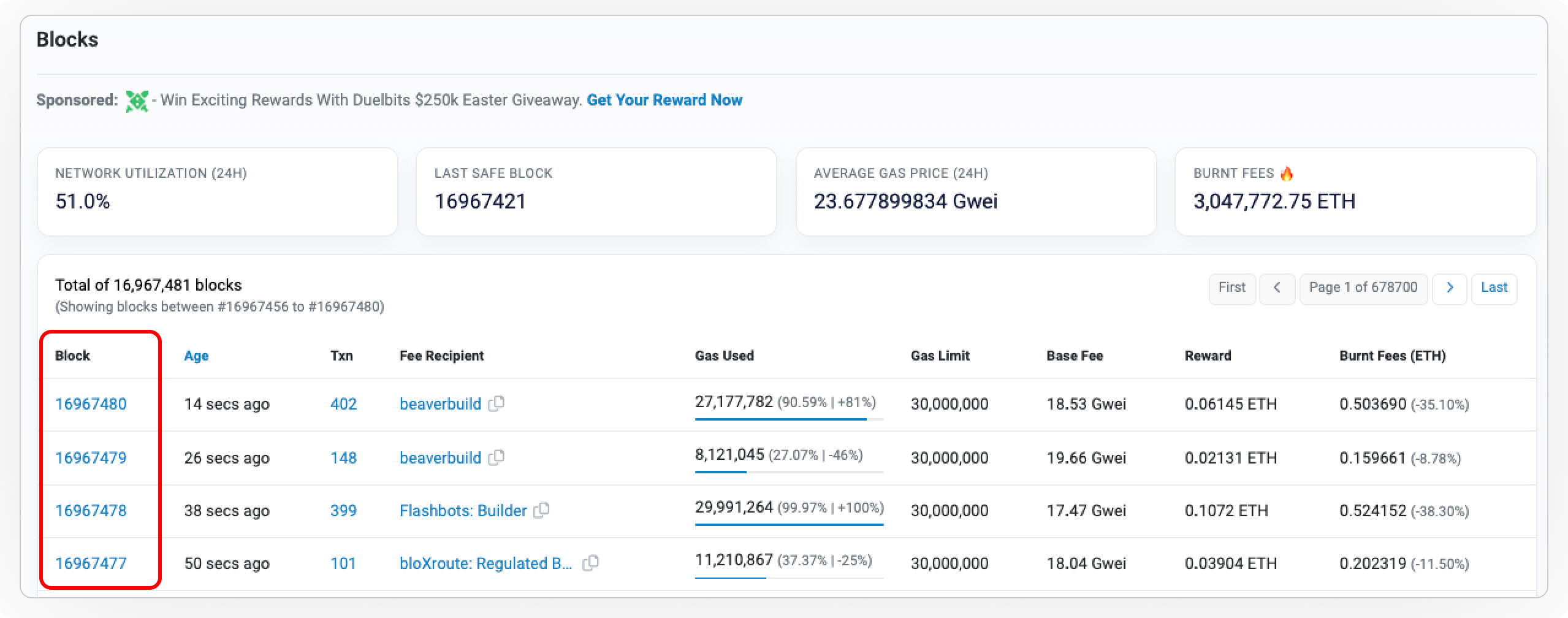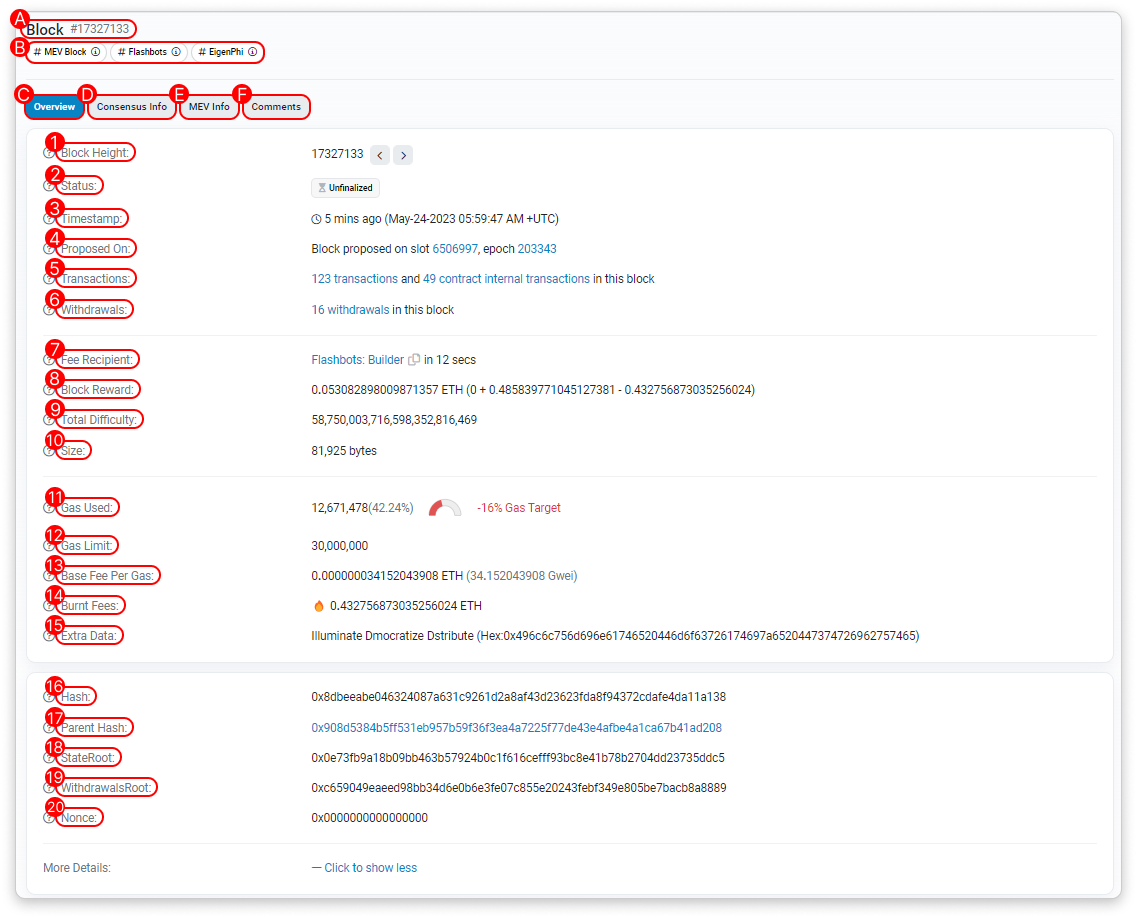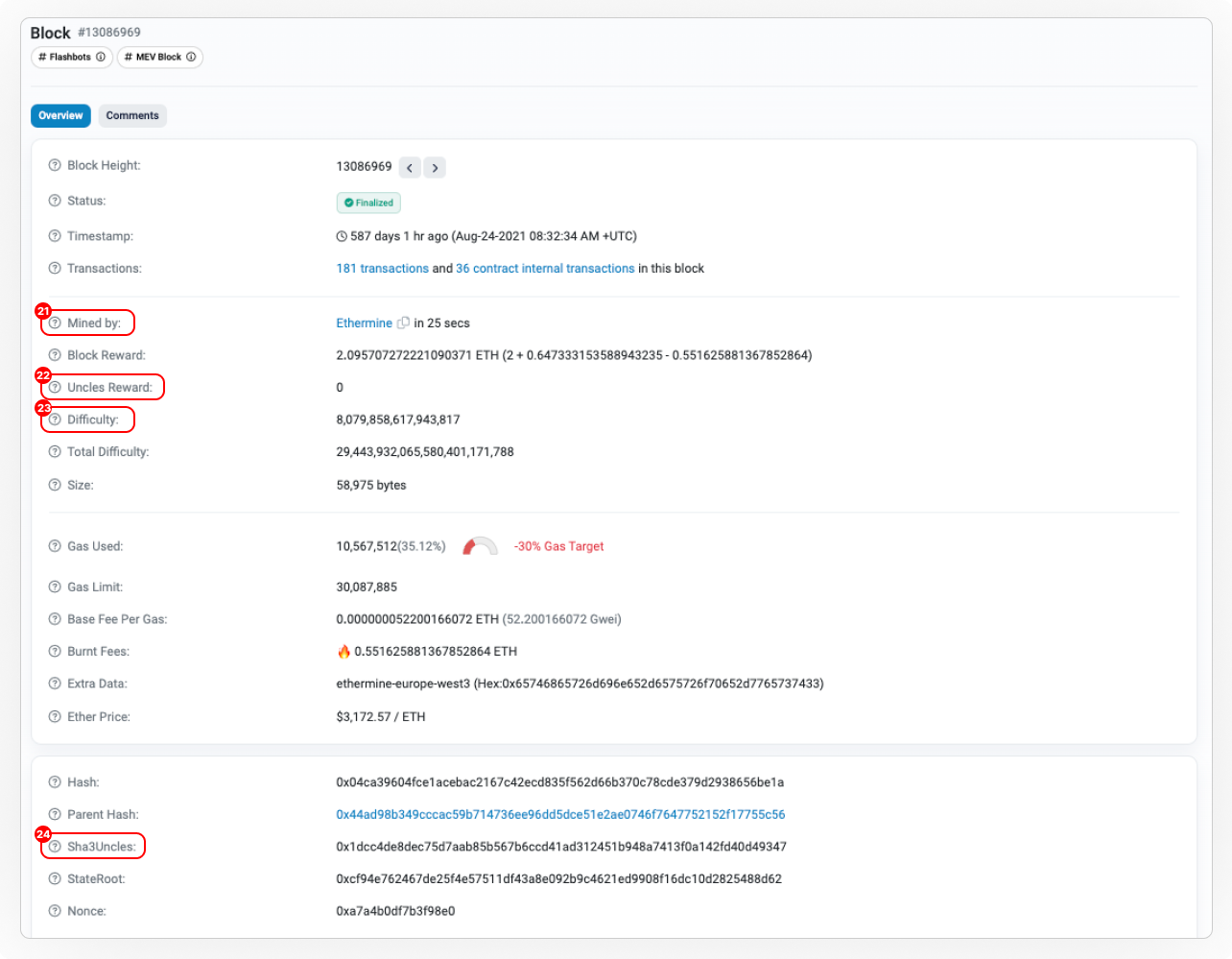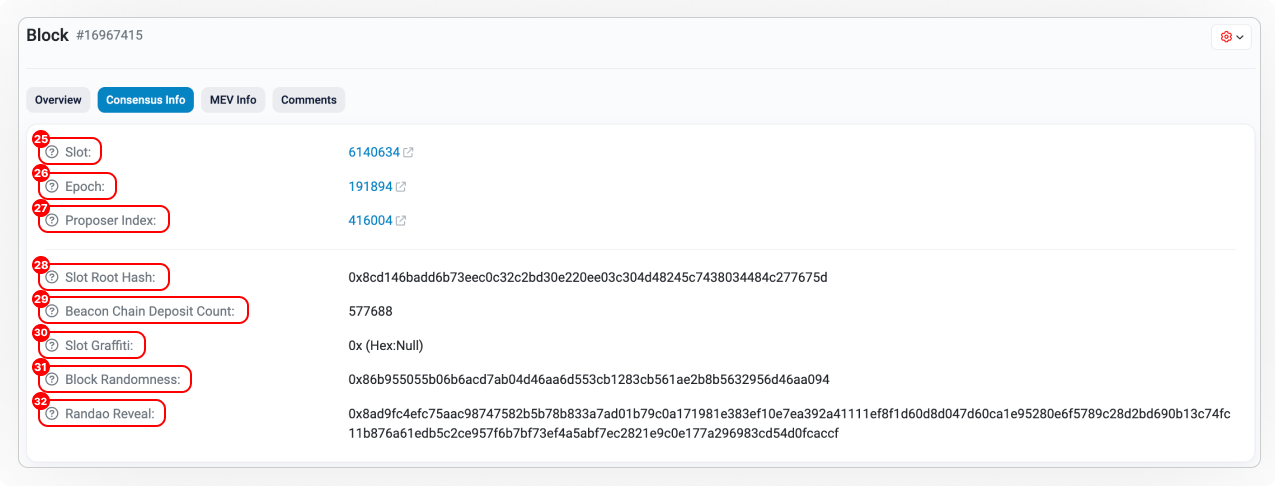Exploring the Block Details
A block is a core concept that can be thought of as a page in a ledger. A block contains transaction data and the hash of the previous block that ensures immutability and security in the blockchain network.

Clicking on the block height will bring you to the block details page. You may refer to our other article to know more about our block page.
Navigating a Block Details Page

A. Block Number: Indicates the number of the produced block
B. Labels: Added to relevant blocks, labels provide additional information regarding them.
Referring to the labels above, [MEV Block] indicates that the block contains one or more MEV transactions in its top slots and was not ordered by gas. Meanwhile, [Flashbots] specifies that Flashbots are involved in the block building process. As for [EigenPhi], the label is added if Etherscan gathers the MEV data using EigenPhi.
C. Overview: The tab that displays the block main information.
D. Consensus Info: The tab that displays the consensus information that happened on the beaconchain.
E. MEV Info: The tab that displays the MEV information.
F. Comments: The tab that displays the Disqus comment section of the block.
Overview Tab
- Block Height: The block height, also known as block number, which indicates the position of a particular block in the blockchain.
- Status: Show the progress of the building block.
- Timestamp: Shows how long ago a block was built. Can be toggled with Date Time (UTC) to display the date and time at which the block was built.
- Proposed On: Shows on which slot and epoch that the block was proposed.
- Transactions: The number of transactions in the block. Contract internal transactions refer to transactions that are created from contract executions and transact Ether.
- Withdrawals: Shows the number of staking withdrawals processed in this block.
- Fee Recipient: Shows which block builder received the reward for successfully building the block.
- Block Reward: The total block reward received by the miner for including the block in the blockchain. The breakdown of rewards (static block reward, gross transaction fees, deduction of burnt fees, uncle inclusion rewards) are also displayed.
- Total Difficulty: Total difficulty of adding the block to the chain (measured in hashes) until this block.
- Size: Size of the block in bytes. It is determined by the block's gas limit.
- Gas Used: The total gas used in the block. The gas used percentage (out of total gas limit) as well as percentage of gas used over the gas target are also included.
- Gas Limit: Total gas limit for the block.
- Base Fee Per Gas: Post-London Upgrade, this represents the minimum gasUsed multiplier required for a tx to be included in a block.
- Burnt Fees: Post-London Upgrade, this represents the part of the tx fee that is burnt: baseFeePerGas * gasUsed. The burnt fees percentage out of total transaction fees is also displayed.
- Extra Data: Any data that can be included by the block builder in the block.
- Hash: The hash of the block header of the current block.
- Parent Hash: The hash of the block from which this block was generated, also known as its parent block.
- StateRoot: The root of the state trie.
- WithdrawalsRoot: Block header withdrawal root hash.
- Nonce: Block nonce is a value used during mining to demonstrate proof of work for a block.
Block details before the Merge

- Mined by: Miner who successfully mined the block.
- Uncles Reward: Rewards given to a miner who mined an uncled block that was included in the viewed block. Read more about uncles here.
- Difficulty: The amount of work required to mine a new block. The difficulty adjusts based on total hash power mining on the blockchain.
- Sha3Uncles: The mechanism with which Ethereum Javascript RLP encodes an empty string.
Consensus Info Tab

- Slot: The slot for which the block is created.
- Epoch: The epoch of the current slot. More on Epoch here.
- Proposer Index: The proposer of the current block.
- Slot Root Hash: 32-bytes root hash of the current slot.
- Beacon Chain Deposit Count: Number of successful deposits on the deposit contract so far.
- Slot Graffiti: 32-bytes for validators to decorrate as they choose with no defined in-protocol use.
- Block Randomness: Source of randomness from the beacon chain RANDAO implementation.
- Randao Reveal: The signature of the current epoch by the block proposer. Constitutes the seed for randomness when mixed in with the other proposers' reveals.
MEV Info Tab

- Proposer Fee Recipient: Block proposer's fee recipient.
- MEV Reward: The amount of reward sent to the block proposer.
- MEV Payout Txn Hash: The transaction hash of the MEV reward paid to the block proposer.
If you would like to do further research on how blocks work, you can watch this video illustrating how blocks work in a blockchain.
